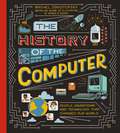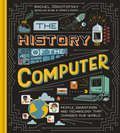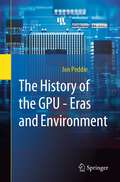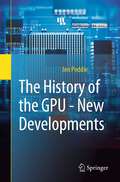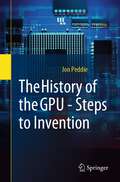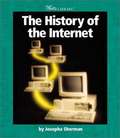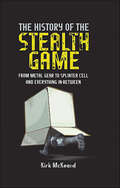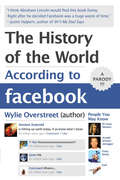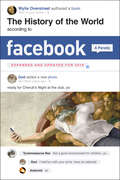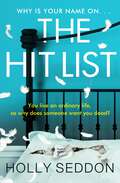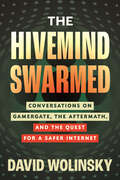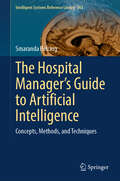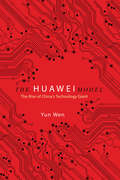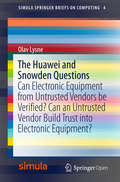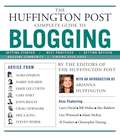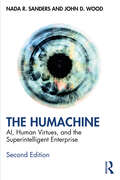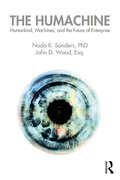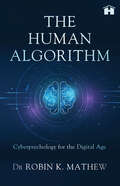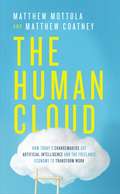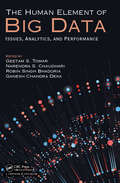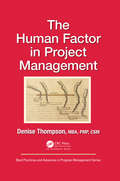- Table View
- List View
The History of the Computer: People, Inventions, And Technology That Changed Our World
by Rachel IgnotofskyExplore the fascinating history of the computer, and the people who made them, in this beautifully illustrated guide for children by bestselling author and illustrator Rachel Ignotofsky.Computers make our lives easier in so many ways - they help us do our work, get directions, check the weather, exercise, shop and understand what's happening around the world. But who created them, and why? How have they transformed the way we interact with our surroundings and each other?Packed with accessible information, fun facts and discussion starters, this charmingly illustrated book takes you from the ancient world to the modern day, focusing on important inventions from the earliest known counting systems (such as the Incan quipu) to the sophisticated algorithms behind AI, space travel and wearable tech. The History of the Computer also profiles a global and diverse range of key players and creators - from An Wang and Margaret Hamilton to Steve Jobs and Tim Berners-Lee - and illuminates their goals, their intentions and the impact of their inventions on our everyday lives.This entertaining and educational journey from the bestselling author of Women in Science will help you understand our most important machines and how we can use them to enhance the way we live. You'll never look at your phone the same way again!
The History of the Computer: People, Inventions, and Technology that Changed Our World
by Rachel IgnotofskyA strikingly illustrated overview of the computing machines that have changed our world—from the abacus to the smartphone—and the people who made them, by the New York Times bestselling author and illustrator of Women in Science.Computers are everywhere and have impacted our lives in so many ways. But who created them, and why? How have they transformed the way that we interact with our surroundings and each other?Packed with accessible information, fun facts, and discussion starters, this charming and art-filled book takes you from the ancient world to the modern day, focusing on important inventions, from the earliest known counting systems to the sophisticated algorithms behind AI. The History of the Computer also profiles a diverse range of key players and creators—from An Wang and Margaret Hamilton to Steve Jobs and Sir Tim Berners-Lee—and illuminates their goals, their intentions, and the impact of their inventions on our everyday lives. This entertaining and educational journey will help you understand our most important machines and how we can use them to enhance the way we live. You&’ll never look at your phone the same way again!
The History of the Future: Oculus, Facebook, and the Revolution That Swept Virtual Reality
by Blake J. HarrisThe author of Console Wars reveals the story behind Oculus and its quest for virtual reality: “Masterful . . . filled with unforgettable characters” (Forbes).From iconic books like Neuromancer to blockbuster films like The Matrix, virtual reality has offered a tantalizing vision of the future. But outside of a few research labs and military training facilities, this technology was mere science fiction. Until 2012, when Oculus founder Palmer Luckey—then just a teenage dreamer living alone in a camper trailer—invents a device that has the potential to change the world.With the help of a videogame legend, a serial entrepreneur, and many other colorful characters, Luckey’s scrappy startup kickstarts a revolution and sets out to bring VR to the masses. What follows is the ultimate entrepreneurial journey, a tale of battles won and lost, lessons learned and shocking turns—including an unlikely multi-billion-dollar acquisition by Facebook’s Mark Zuckerberg.Drawing on over a hundred interviews with the key players driving this revolution, The History of the Future weaves together a rich, cinematic narrative that captures the breakthroughs, breakdowns, and human drama of trying to change the world. The result is a supremely entertaining look at the birth of a game-changing new industry.
The History of the GPU - Eras and Environment
by Jon PeddieThis is the second book in a three-part series that traces the development of the GPU, which is defined as a single chip with an integrated transform and lighting (T&L) capability. This feature previously was found in workstations as a stand-alone chip that only performed geometry functions. Enabled by Moore’s law, the first era of GPUs began in the late 1990s.Silicon Graphics (SGI) introduced T&L first in 1996 with the Nintendo 64 chipset with integrated T&L but didn’t follow through. ArtX developed a chipset with integrated T&L but didn’t bring it to market until November 1999.The need to integrate the transform and lighting functions in the graphics controller was well understood and strongly desired by dozens of companies. Nvidia was the first to produce a PC consumer level single chip with T&L in October 1999. All in all, fifteen companies came close, they had designs and experience, but one thing or another got in their way to prevent them succeeding.All the forces and technology were converging; the GPU was ready to emerge. Several of the companies involved did produce an integrated GPU, but not until early 2000. This is the account of those companies, the GPU and the environment needed to support it. The GPU has become ubiquitous and can be found in every platform that involves a computer and a user interface.
The History of the GPU - New Developments
by Jon PeddieThis third book in the three-part series on the History of the GPU covers the second to sixth eras of the GPU, which can be found in anything that has a display or screen. The GPU is now part of supercomputers, PCs, Smartphones and tablets, wearables, game consoles and handhelds, TVs, and every type of vehicle including boats and planes. In the early 2000s the number of GPU suppliers consolidated to three whereas now, the number has expanded to almost 20. In 2022 the GPU market was worth over $250 billion with over 2.2 billion GPUs being sold just in PCs, and more than 10 billion in smartphones. Understanding the power and history of these devices is not only a fascinating tale, but one that will aid your understanding of some of the developments in consumer electronics, computers, new automobiles, and your fitness watch.
The History of the GPU - Steps to Invention
by Jon PeddieThis is the first book in a three-part series that traces the development of the GPU. Initially developed for games the GPU can now be found in cars, supercomputers, watches, game consoles and more. GPU concepts go back to the 1970s when computer graphics was developed for computer-aided design of automobiles and airplanes. Early computer graphics systems were adopted by the film industry and simulators for airplanes and high energy physics—exploding nuclear bombs in computers instead of the atmosphere. A GPU has an integrated transform and lighting engine, but these were not available until the end of the 1990s. Heroic and historic companies expanded the development and capabilities of the graphics controller in pursuit of the ultimate device, a fully integrated self-contained GPU. Fifteen companies worked on building the first fully integrated GPU, some succeeded in the console, and Northbridge segments, and Nvidia was the first to offer a fully integrated GPU for the PC. Today the GPU can be found in every platform that involves a computer and a user interface.
The History of the Internet
by Josepha ShermanThe beginnings of the Internet can be traced back to the 1960s when APRANET, a military computer network, was developed for the U. S. Department of Defense. This network grew to become what we call the Internet. Learn more about the people who created the Internet and how a small computer network evolved into the international phenomenon it is today.
The History of the Stealth Game: From Metal Gear to Splinter Cell and Everything in Between
by Kirk McKeandFor many, video games are like magic. They hide in the dark and then appear from nowhere, fully formed. Based on over a dozen firsthand interviews that cover genre-defining games and the titles that inspired them — Metal Gear Solid, Thief, Deus Ex, Dishonored, Assassin’s Creed, Hitman, Splinter Cell, Prey, The Last of Us Part II, and more — this book shines a flashlight into the shadowy corners of game development history, uncovering the untold stories behind these formative titles. These insider interviews cover development struggles, internal conflicts, changes in direction, and insight into the reasoning and challenges behind specific mechanics and development decisions. There’s the story of how Thief was developed, in part, by an indie band. It covers Metal Gear Solid’s localization issues and the Americanization of Hideo Kojima’s seminal stealth series, along with a page from the original Metal Gear Solid design document. Elsewhere, one of IO Interactive’s founders explains why Hitman’s Agent 47 is inspired by Coca-Cola, the creator of Assassin’s Creed tells us his vision for the future of the series, and there are plenty of surprises besides. Rather than looking back at the genre as a whole, it traces a line through and connects the dots via personal stories and anecdotes from the people who were there. Foreword written by Arkane’s Harvey Smith.
The History of the World According to Facebook
by Wylie OverstreetThe Sun is now friends with Earth and 7 other planetsPluto: Not cool.What if Facebook had emerged with the Big Bang, and every historical event took place online? Imagine how we’d we see history if . . .On April 15, 1865, Abraham Lincoln updated his status: "Taking the missus to the theater"God and Stephen Hawking trolled each other in a comment war over the creation of the universe?Alexander the Great "checked into" all the countries he conqueredDonald Trump and Vladimir Putin "Liked" each other's cryptic statusesIrreverent and clever, The History of the World According to Facebook goes back through time, from the beginning of the world to the present, to cover all the major events and eras of human history, such as the Renaissance, the Industrial Revolution, and the Information Age. Filled with hundreds of actual figures from across the centuries and thousands of invented statuses, comments, and actions lampooning Facebook users’ penchant for oversharing, abbreviation, self-importance, and lazy jargon, The History of the World According to Facebook defies all attempts at taking the multi-billion user social media platform SRSLY. It is the funniest parody of history and the dawn of man since, well, the dawn of man.
The History of the World According to Facebook, Revised Edition
by Wylie OverstreetA revised and expanded edition of the bestselling parody that includes thirty-pages of new text, photos, and contemporary subjects—a clever and fresh historical chronicle.The Sun is now friends with Earth and 7 other planetsPluto: Not cool.What if Facebook had emerged with the Big Bang, and every historical event took place online? Imagine how we’d we see history if . . .On April 15, 1865, Abraham Lincoln updated his status: "Taking the missus to the theater"God and Stephen Hawking trolled each other in a comment war over the creation of the universe?Alexander the Great "checked into" all the countries he conqueredDonald Trump and Vladimir Putin "Liked" each other's cryptic statusesIrreverent and clever, The History of the World According to Facebook goes back through time, from the beginning of the world to the present, to cover all the major events and eras of human history, such as the Renaissance, the Industrial Revolution, and the Information Age. Wylie Overstreet brings the book up to date with three-dozen pages of additional material on contemporary figures and topics, from Caitlin Jenner to Deflategate to MAGA and Trump.Filled with hundreds of actual figures from across the centuries and thousands of invented statuses, comments, and actions lampooning Facebook users’ penchant for oversharing, abbreviation, self-importance, and lazy jargon, The History of the World According to Facebook defies all attempts at taking the multi-billion user social media platform SRSLY. It is the funniest parody of history and the dawn of man since, well, the dawn of man.
The Hit List: 'Sinister, clever and utterly compelling' Lesley Kara
by Holly SeddonWhat would you do if you found your own name on a hit list? Seddon addresses this terrifying question in an explosive novel. One of the most exciting, brave and clever books I have ever read. The Hit List is my book of the year. Gillian McAllister, author of How to DisappearThis novel kept me guessing to the end. A twisty, intelligent thrill ride. Excellent! Will Dean, author of Black River This meticulously plotted novel will suck you ever deeper into its dark underbelly. Sinister, clever and utterly compelling. Lesley Kara, author of WHO DID YOU TELL?On the anniversary of her husband's accidental death, Marianne seeks comfort in everything Greg left behind. She wears his shirt and cologne, reads their love letters and emails. Soon she's following his footsteps across the web, but her desperation to cling to any trace of him leads her to the dark web. And a hit list with her name on it. To try to save herself from Sam, the assassin hired to kill her, Marianne must first unpick the wicked web in which Greg became tangled. Was Greg trying to protect her or did he want her dead?A gripping and emotional ebook bestseller about a woman who discovers a shocking secret about her late husband that will hook you from the first pageLoved THE HIT LIST? You can download Holly Seddon's latest twisty thriller THE SHORT STRAW now, an atmospheric mystery about three sisters stranded in an abandoned manor house later at night.
The Hit List: 'Sinister, clever and utterly compelling' Lesley Kara
by Holly SeddonWhat would you do if you found your own name on a hit list? Seddon addresses this terrifying question in an explosive novel. One of the most exciting, brave and clever books I have ever read. The Hit List is my book of the year. Gillian McAllister, author of How to DisappearThis novel kept me guessing to the end. A twisty, intelligent thrill ride. Excellent! Will Dean, author of Black River This meticulously plotted novel will suck you ever deeper into its dark underbelly. Sinister, clever and utterly compelling. Lesley Kara, author of WHO DID YOU TELL?On the anniversary of her husband's accidental death, Marianne seeks comfort in everything Greg left behind. She wears his shirt and cologne, reads their love letters and emails. Soon she's following his footsteps across the web, but her desperation to cling to any trace of him leads her to the dark web. And a hit list with her name on it. To try to save herself from Sam, the assassin hired to kill her, Marianne must first unpick the wicked web in which Greg became tangled. Was Greg trying to protect her or did he want her dead?A gripping and emotional ebook bestseller about a woman who discovers a shocking secret about her late husband that will hook you from the first pageLoved THE HIT LIST? You can download Holly Seddon's latest twisty thriller THE SHORT STRAW now, an atmospheric mystery about three sisters stranded in an abandoned manor house later at night.
The Hitchhiker's Guide to Python: Best Practices for Development
by Kenneth Reitz Tanya SchlusserThe Hitchhiker's Guide to Python takes the journeyman Pythonista to true expertise. More than any other language, Python was created with the philosophy of simplicity and parsimony. Now 25 years old, Python has become the primary or secondary language (after SQL) for many business users. With popularity comes diversityâ??and possibly dilution.This guide, collaboratively written by over a hundred members of the Python community, describes best practices currently used by package and application developers. Unlike other books for this audience, The Hitchhikerâ??s Guide is light on reusable code and heavier on design philosophy, directing the reader to excellent sources that already exist.
The Hivemind Swarmed: Conversations on Gamergate, the Aftermath, and the Quest for a Safer Internet
by David WolinskyAn incisive oral history that brings together the voices of major figures in gaming, tech, media, and politics to reflect on the long shadow of GamergateWith The Hivemind Swarmed, oral historian and documentary researcher David Wolinsky invites readers to sit in on a series of urgent, intimate conversations between some of the most distinguished voices across entertainment and media as they reflect on the longstanding impact of Gamergate. What went wrong, and what can we learn from Gamergate to help us build a more equitable online world?The backstory: 10 years ago, a disgruntled software developer named Eron Gjoni posted online to accuse his ex-girlfriend, game developer Zoë Quinn, of sleeping with game critics in exchange for positive reviews. He offered no evidence to back up his claims. However, his posts were picked up by extremists in the gaming community who built a vicious online movement targeting women, minorities, and progressive voices. Rallying under the hashtag #gamergate, they sent their victims round-the-clock death and rape threats. Game companies, for the most part, declined to take action as their female employees were harassed out of their jobs. The FBI launched an investigation but found "no true threat."Gamergate holds the grim distinction of being the first modern online harassment campaign. It arguably served as a model for the alt-right movement that would help propel Donald Trump to the White House. And it highlighted a toxic media culture—not just in gaming, but in film, TV, journalism, and more—in which leaders, through their passivity, took the side of the oppressor. Now, ten years later—in the wake of #MeToo, Charlottesville, the Trump years, and the January 6 insurrection—the questions discussed here are more important than ever.
The Hospital Manager’s Guide to Artificial Intelligence: Concepts, Methods, and Techniques (Intelligent Systems Reference Library #263)
by Smaranda BelciugThis book presents an essential guide to understanding the power of artificial intelligence in reshaping the healthcare system. In the rapidly evolving world of healthcare, a guide of how to use artificial intelligence in hospital management is crucial. The book explores how readers can use artificial intelligence to optimize patient care, costs, revenue, and profits. It examines real-world applications and case studies and provides theoretical concepts together with examples in order to show the hospital manager how to avoid over-testing, over-treating, and over-resourcing, how to enhance the pathology and radiology departments, how to use the Internet of Surgical things together with virtual and augmented reality. Besides this, it is shown how multiple artificial intelligence models can be used in disaster scenarios. Whether readers are computer scientists, mathematicians, healthcare professionals, medical students, or tech enthusiasts, this book provides a clear look into how artificial intelligence is shaping the future of hospitals. Embrace the chance artificial intelligence brings to the healthcare system and learn how it can be used to save lives today.
The Huawei Model: The Rise of China's Technology Giant (The Geopolitics of Information)
by Yun WenIn 2019, the United States' trade war with China expanded to blacklist the Chinese tech titan Huawei Technologies Co. Ltd. The resulting attention showed the information and communications technology (ICT) firm entwined with China's political-economic transformation. But the question remained: why does Huawei matter? Yun Wen uses the Huawei story as a microcosm to understand China's evolving digital economy and the global rise of the nation's corporate power. Rejecting the idea of the transnational corporation as a static institution, she explains Huawei's formation and restructuring as a historical process replete with contradictions and complex consequences. She places Huawei within the international political economic framework to capture the dynamics of power structure and social relations underlying corporate China's globalization. As she explores the contradictions of Huawei's development, she also shows the ICT firm's complicated interactions with other political-economic forces. Comprehensive and timely, The Huawei Model offers an essential analysis of China's dynamic development of digital economy and the global technology powerhouse at its core.
The Huawei and Snowden Questions
by Olav LysneThis open access book answers two central questions: firstly, is it at all possible to verify electronic equipment procured from untrusted vendors? Secondly, can I build trust into my products in such a way that I support verification by untrusting customers? In separate chapters the book takes readers through the state of the art in fields of computer science that can shed light on these questions. In a concluding chapter it discusses realistic ways forward. In discussions on cyber security, there is a tacit assumption that the manufacturer of equipment will collaborate with the user of the equipment to stop third-party wrongdoers. The Snowden files and recent deliberations on the use of Chinese equipment in the critical infrastructures of western countries have changed this. The discourse in both cases revolves around what malevolent manufacturers can do to harm their own customers, and the importance of the matter is on par with questions of national security.This book is of great interest to ICT and security professionals who need a clear understanding of the two questions posed in the subtitle, and to decision-makers in industry, national bodies and nation states.
The Huffington Post Complete Guide to Blogging
by Arianna Huffington The editors of the Huffington PostThe editors of The Huffington Post -- the most linked-to blog on the web -- offer an A-Z guide to all things blog, with information for everyone from the tech-challenged newbie looking to get a handle on this new way of communicating to the experienced blogger looking to break through the clutter of the Internet. With an introduction by Arianna Huffington, the site's cofounder and editor in chief, this book is everything you want to know about blogging, but didn't know who to ask. As entertaining as it is informative, The Huffington Post Complete Guide to Blogging will show you what to do to get your blog started. You'll find tools to help you build your blog, strategies to create your community, tips on finding your voice, and entertaining anecdotes from HuffPost bloggers that will make you wonder what took you so long to blog in the first place. The Guide also includes choice selections from HuffPost's wide-ranging mix of top-notch bloggers. Among those who have blogged on HuffPost are Barack Obama, Hillary Clinton, Larry David, Jane Smiley, Bill Maher, Nora Ephron, Jon Robin Baitz, Steve Martin, Lawrence O'Donnell, Ari Emanuel, Mia Farrow, Al Franken, Gary Hart, Barbara Ehrenreich, Edward Kennedy, Harry Shearer, Nancy Pelosi, Adam McKay, John Ridley, and Alec Baldwin.
The Humachine: AI, Human Virtues, and the Superintelligent Enterprise
by Nada R. Sanders John D. WoodUpdated for a post-Covid world, the second edition of this groundbreaking book explains why becoming a Humachine enterprise is the only way forward for a company to maintain a competitive advantage in the age of artificial intelligence (AI).The first edition of The Humachine offered a foundation for a new form of enterprise, integrating AI technology and human resources to optimize the unique advantages possessed by each. Now, in the face of the ‘Great Resignation’ and ‘botsourcing’—where an activity previously done by humans is replaced by technology—thought leaders Sanders and Wood present a more positive and promising scenario, where an enterprise recognizes human resources as an asset class that possesses skills that cannot be replaced by automation. Enlightened business leaders will look to create synergy between technology and people, enabling the organization to maximize its capabilities by elevating the basis of decision making with closer-to-perfect information and rationality. This book provides a roadmap for how to do this and achieve collective intelligence at the enterprise level: superintelligence. More specifically, it answers these questions, and more. Why must an enterprise achieve superintelligence as a competitive advantage in the age of AI? How can any organization achieve superintelligence by following the 4-I model? What is the step-by-step process an enterprise should follow in becoming a Humachine? What strategies can be used by enterprise leaders to ‘futureproof’ the Humachine against uncertainty? All business leaders, executives, and managers at companies wanting to use AI and technology to survive and thrive in this new age, and students of analytics and decision-making, will value this thought-provoking and practical book, rich with case studies.
The Humachine: Humankind, Machines, and the Future of Enterprise
by Nada R. Sanders John D. WoodThere is a lot of hype, hand-waving, and ink being spilled about artificial intelligence (AI) in business. The amount of coverage of this topic in the trade press and on shareholder calls is evidence of a large change currently underway. It is awesome and terrifying. You might think of AI as a major environmental factor that is creating an evolutionary pressure that will force enterprise to evolve or perish. For those companies that do survive the "silicon wave" sweeping through the global economy, the issue becomes how to keep their humanity amidst the tumult. What started as an inquiry into how executives can adopt AI to harness the best of human and machine capabilities turned into a much more profound rumination on the future of humanity and enterprise. This is a wake-up call for business leaders across all sectors of the economy. Not only should you implement AI regardless of your industry, but once you do, you should fight to stay true to your purpose, your ethical convictions, indeed your humanity, even as our organizations continue to evolve. While not holding any punches about the dangers posed by overpowered AI, this book uniquely surveys where technology is limited, and gives reason for cautious optimism about the true opportunities that lie amidst all the disruptive change currently underway. As such, it is distinctively more optimistic than many of the competing titles on Big Technology. This compelling book weaves together business strategy and philosophy of mind, behavioral psychology and the limits of technology, leadership and law. The authors set out to identify where humans and machines can best complement one another to create an enterprise greater than the sum total of its parts: the Humachine. Combining the global business and forecasting acumen of Professor Nada R. Sanders, PhD, with the legal and philosophical insight of John D. Wood, Esq., the authors combine their strengths to bring us this profound yet accessible book. This is a "must read" for anyone interested in AI and the future of human enterprise.
The Human Algorithm
by Robin K. MathewIn today&’s hyperconnected world, our lives have become increasingly intertwined with the technology we interact with. While innovations like smartphones and the Internet have brought unprecedented convenience and connectivity, they have also introduced new risks and challenges.In The Human Algorithm, Dr Robin K. Mathew takes readers on an eye-opening exploration of the complex digital landscape and our ever-evolving engagement with it. With chapters delving into smartphone addiction, the impact of technology on cognitive development, threats such as cyberbullying, online predators, and the dark web, this book shines a revelatory light on the often-overlooked aspects of our online existence. This comprehensive work also dedicates chapters to the internet&’s role in fuelling anxiety and hypochondria, the emergence of cyber dating and romance, and the potential of artificial intelligence (AI), among other crucial topics.All in all, this richly researched and compellingly argued compendium will equip you with the knowledge and insights to navigate the digital age with awareness and resilience.
The Human Change Management Body of Knowledge (Best Practices in Portfolio, Program, and Project Management)
by Vicente Goncalves Carla Campos"I am happy to recommend this work. I believe in the principles presented in it and identify with its context. Due to the lack of knowledge on the subject in the market, it is a topic that must be made known. The book should be in the library of all project and change managers."— Paul Dinsmore, PMI Fellow "Every manager should integrate HCMBOK® practices into their project management methodology in order to fully develop their work. This book addresses a simple and practical way that the critical component in organizational change management can be applied to projects of all kinds: the human factor."— Bruno Machado, Director, Project Management Office, Grupo Anima Educação "We live in a time of change, speed, and an avalanche of information. It is still very difficult for most companies to change their organizational culture efficiently. This book makes us reflect upon the crucial element in any change, and which most managers do not place in the foreground—the people." — Joyce Meyer, CEO, iDigo "In today's constantly changing world, the Project Manager must have sensitivity to how people react to change. Knowing a method that provides a structured way to take care of the human aspect is a key factor in the success of any project! HCMBOK® offers a simple and practical approach to managing change, which can be easily incorporated into the project management routine, providing amazing results."— Pedro Augusto Cardoso da Silva, Engineering Director, METRÔRIO This reference starts by presenting the concept of change management, its players, strategies, and applicable models. In the second part, the book covers the set of good practices, methodology, and tools known as the HCMBOK®— Human Change Management Body of Knowledge. The third part introduces the concept of the Change Management Office (CMO) and its relation to the strategic planning of an organization. The book concludes with the competencies essential for a change manager, an approach to agile methodologies, and a model for managing cultural change.
The Human Cloud: How Today's Changemakers Use Artificial Intelligence and the Freelance Economy to Transform Work
by Matthew Mottola Matthew Douglas CoatneyEmpower yourself with the knowledge to keep up with the rapidly changing technical world of work, as two workforce productivity and technology experts lay out a clear picture of the?coming?revolution?in how work is done and how jobs are shaped.If you listen to the news, robots are coming for your job. Full-time employment will soon be a thing of the past as organizations opt more to hire employees on a contract basis.?With technological advances across email, video, project management, and instant messaging platforms, being tied to a desk working full time for one company is becoming obsolete. So, where does that leave you?The Human Cloud may be the most important book you read to prepare for how work is done in the future. In these pages, human cloud technologist Matthew Mottola and AI expert Matthew Coatney help you not only clearly understand the transition you see happening around you, but they will also help you take advantage of it.In The Human Cloud, Mottola and Coatney inform you about topics including:How employees and employers will be able to take advantage of the new automated and freelance-based workplace.How they will be able to take advantage of the new technology disruptions the machine cloud will create.Why the changes employees and employers are seeing aren&’t the projection of doom that many are predicting.How to navigate the coming job marketplace.By replacing fear with knowledge, you will better understand how this shift in employment is a good thing, be equipped to embrace the positive?advantages new technology brings, and further secure how your own job is shaped so you are never left behind.
The Human Element of Big Data: Issues, Analytics, and Performance
by GEETAM S. TOMAR, NARENDRA S. CHAUDHARI, ROBIN SINGH BHADORIA AND GANESH CHANDRA DEKAThe proposed book talks about the participation of human in Big Data.How human as a component of system can help in making the decision process easier and vibrant.It studies the basic build structure for big data and also includes advanced research topics.In the field of Biological sciences, it comprises genomic and proteomic data also. The book swaps traditional data management techniques with more robust and vibrant methodologies that focus on current requirement and demand through human computer interfacing in order to cope up with present business demand. Overall, the book is divided in to five parts where each part contains 4-5 chapters on versatile domain with human side of Big Data.
The Human Factor in Project Management (Best Practices in Portfolio, Program, and Project Management)
by Denise ThompsonIn the fluid world of changing business environments and variables affecting projects, a style of project management that primarily relies on maintaining the Iron Triangle, that tenuous mix of schedule, scope, and budgets, is no longer the sole path to success. Today’s project management demands a focus on leadership of the kind that anticipates and embraces change, challenges the status quo, and inspires teams. Developing these skills requires a mastery of emotional intelligence, courage, critical thinking, and a desire to become a true leader dedicated to developing success. Whether you are participating in a project for the first time or you’ve been doing projects for decades, you know the very essence of a project is to return value that gains a competitive edge and propels the organization forward into new frontiers. Whether you believe the best results are earned through agile, waterfall, or a mix of methodologies, project leadership is the secret weapon that will maintain and grow professional relevance, knowledge, and value in today’s workforce. Through a series of notable lessons in human history and behavior, The Human Factor in Project Management takes you on a journey of self-discovery to define your capabilities and gaps, while building your leadership skills. In your role as a project manager, project sponsor, product owner, or champion, the book challenges you to question the choices you make in a series of stories where you are the main character. This guide to career and personal growth forces you to look beyond the limitations of a Gantt chart, spreadsheet, or a Kanban board to evaluate the value from every tool you use and every action you take.
